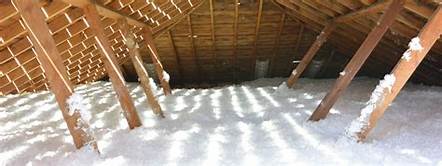Unless your home was specially constructed for energy efficiency, you can probably reduce your energy bills by adding insulation to your existing home. Many older homes have less insulation than homes built today, but even adding insulation to a newer home can pay for itself within a few years.
To determine whether you should attempt adding insulation, you first need to find out how much insulation you already have in your home and where it is. A qualified home energy auditor will include an insulation check as a routine part of a whole-house energy assessment. An energy assessment, also known as a home energy audit, will also help identify areas of your home that are in need of air sealing. (Before you insulate, you should make sure that your home is properly air sealed.)
If you don’t want an energy assessment, you need to find out the following for yourself:
If you live in a newer house, you can probably get this information from the builder. If you live in an older house, you’ll have to inspect the insulation.
*Thickness must not be used as the sole factor in determining the R-value of loose-fill insulation, particularly for attic insulation.

Adding Insulation to your existing home is a must, When you see the rafters this is attic is poorly insulated.

Professional insulation is always done after properly air sealing.

R-60 22inches of added attic insulation is recommended as the best for Georgia.
Inspecting and Evaluating Adding Insulation
Check the attic, walls, and floors adjacent to an unheated space, like a garage or basement. The structural elements are usually exposed in these areas, which makes it easy to see what type of insulation you have and to measure its depth or thickness (inches).
Inspect the exterior walls by using an electrical outlet:
- Turn off the power to the outlet.
- Remove the outlet cover and shine a flashlight into the crack around the outlet box. You should be able to see if there is insulation in the wall and possibly how thick it is.
- Pull out a small amount of insulation if needed to help determine the type of insulation.
- Check outlets on all floors as well as old and new parts of your house. Just because you find insulation in one wall doesn’t mean that it’s everywhere in the house.
Determining Recommended R-Values When Addin Insulation
When you find out the R-values of your insulation either from an energy assessment, the home builder, or your own inspection, you can then use the Home Energy Saver tool to determine how much insulation to add your existing home and where you should add it for maximum energy efficiency.
Estimating Costs and Payback
The Home Energy saver calculator also provides recommendations on energy upgrades, including adding insulation to your existing home, and the rate of return.
Aladdin Insulation offers free energy assessments, evaluations, and free estimates wehen adding insulation to your home. please call 678-528-7115 or visit us at aladdininsulation.com for more information.
